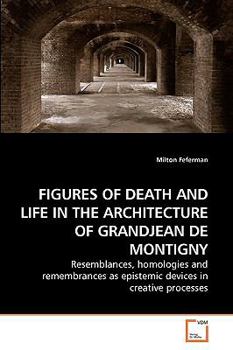FIGURES OF DEATH AND LIFE IN THE ARCHITECTURE OF GRANDJEAN DE MONTIGNY: Resemblances, homologies and remembrances as epistemic devices in creative processes
The central theme of this book is that many architectural works produced at the end of the eighteenth century in France, while programmatically distinct, incorporate images drawn from a common set of ideas and images. One observes that during a long historical period, philosophical, religious and even secular ideas – reproducing constant and repetitive imaginative narratives - coalesce around certain central themes: the representation of an earthly pilgrimage that, after conquering a symbolic path of sins and difficulties, arrives at a “space” that represents liberation; images of the garden of Eden, of the primitive ladder to the heavens, and of the spatial “ambitus” that forms the imagined illustration to the ancient text of the “Tabula Cebetis.” To illustrate these concepts, two exemplary architectural models executed by the French architect Auguste-Henry-Victor Grandjean de Montigny (Paris, 1776-Rio de Janeiro, 1850) are utilized: an Elysée or Cimitière, selected for the Academy’s 1799 Grand Prix competition and his house built in the Gávea section of Rio de Janeiro, Brazil.
Format:Paperback
Language:English
ISBN:3639212606
ISBN13:9783639212600
Release Date:December 2009
Publisher:VDM Verlag
Length:252 Pages
Weight:0.82 lbs.
Dimensions:0.6" x 6.0" x 9.0"
Related Subjects
ArchitectureCustomer Reviews
0 rating





